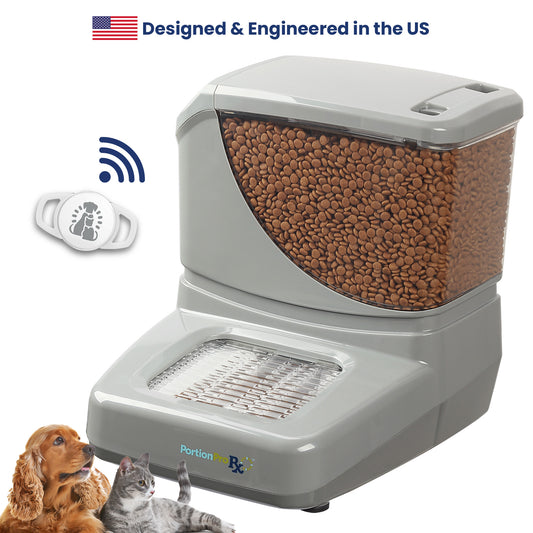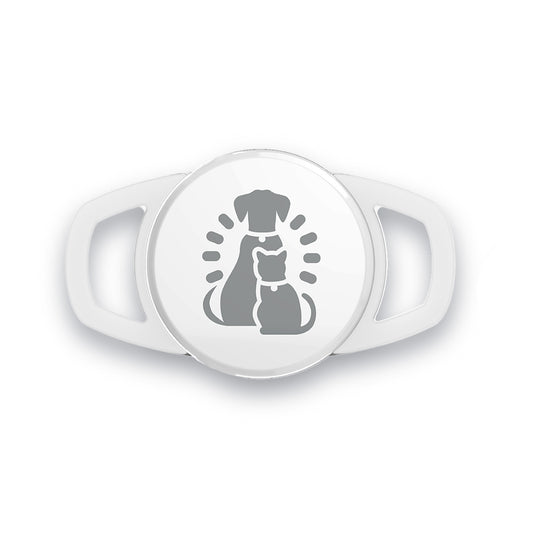Tired of dealing with tangled fur? Learn tips that help you simplify the grooming process and keep your long-haired dog looking their best!
Owning a long-coated dog breed comes with many perks. Their flowing fur is stunning, soft to the touch, and adds to their unique charm. However, maintaining these beautiful coats can be distinctly challenging. Their luxurious coats require extra care to keep them healthy, shiny, and tangle-free.
Whether you're a seasoned pet parent or a first-time groomer, understanding the right dog grooming tools, techniques, and routines can make all the difference. In this guide, we’ll walk you through everything you need to know to keep your long-haired pup looking and feeling their best.
What Breeds Have Long Coats?
Long-haired dogs come in a variety of breeds, each with unique grooming needs. While all long coats require regular care, some are more prone to tangling, matting, or other challenges. Here are some of the most well-known long-haired breeds:
- Afghan Hound
- Bearded Collie
- Briard
- Lhasa Apso
- Maltese
- Pekingese
- Shetland Sheepdog
- Yorkshire Terrier

Create a Calm Environment
When preparing your dog for grooming, a great first step is to create an environment that is relaxing and stress-free. Choose a quiet space free from loud noises and distractions to help your dog feel safe and at ease. Consider playing soft, calming music or using aromatherapy with pet-safe essential oils to create a relaxing atmosphere. It’s also helpful to groom your dog at a time when they’re naturally more relaxed, such as after exercise or a meal.
Gather the Right Tools
Having the right tools is essential for effective grooming. Start with a brush or comb designed for your dog’s coat type, along with grooming scissors for touch-ups and dog clippers or grinders for nails. For long-haired dogs prone to shedding or matting, specialized tools like undercoat rakes or deshedding brushes are invaluable. If you're aiming for a more significant haircut or detailed trim, finding the best dog grooming clippers for your pup can make the job much easier.
If you’re finding it overwhelming to collect all the separate tools, consider trying an all-in-one dog grooming kit like the Grooming Pro RX, which combines shedding, trimming, and cleanup in one easy-to-use device. It’s a great option to simplify grooming while keeping your dog comfortable

2. Bathing Your Long-Haired Dog
Wet and Shampoo the Coat
Begin by wetting your dog’s coat with lukewarm water. Apply a dog-safe shampoo and gently massage it into the fur, focusing on dirty areas and covering the hairs down to the root. Rinse thoroughly to remove all shampoo residue, making sure that the coat is completely clean before moving on to the next step.
Condition the Coat
After shampooing, apply a conditioner to help keep the fur soft and tangle-free. Leave it on for a few minutes before rinsing thoroughly. Conditioner helps prevent matting and makes brushing easier later on.
Drying
Gently towel-dry your dog to remove excess water. Then, if your dog will tolerate it, use a blow dryer on a cool setting to dry the coat fully. Keep the dryer at a safe distance to avoid overheating the skin! Make sure to dry thoroughly in areas like the underarms to prevent mats and skin issues from arising.
3. Brushing and Detangling
Work in Sections
Brushing your dog’s long coat is easiest when done in sections. Start at the base of the coat and work your way up, dividing the fur into manageable parts. This method makes sure that you don't miss any areas and reduces the risk of tangles or mats.
Use the Right Brush
Choose a brush that suits your dog’s coat type. Slicker brushes are great for detangling, while pin brushes work well for smoothing long coats. For thick or double coats, an undercoat rake helps remove loose hair and prevents matting.
Be Gentle
Always be gentle when brushing your dog’s long coat. Start with a wide-tooth comb or detangling spray to loosen any mats, then move to a finer brush. Brush in the direction of the fur growth to avoid tugging.
4. Trimming, Nail Care, and Ear Cleaning
Trim with Grooming Scissors
Use grooming scissors to trim your dog’s coat around sensitive areas like the face and paws. For the face, use rounded-tip scissors to avoid accidents. Trim the fur around the eyes, ears, and mouth to keep them tidy, as well as the fur around the paw pads to prevent matting and improve mobility.
Trim the Nails
Regularly trim your dog’s nails to avoid overgrowth, which can cause discomfort or injury. Use a sharp dog nail clipper or grinder and be careful not to cut too close to the quick. Trim small amounts at a time to ensure safety and comfort.
Clean the Ears
Clean your dog’s ears regularly to prevent infections. Use a dog-safe ear cleaner and gently wipe the outer ear with a cotton ball or cloth. Avoid inserting anything into the ear canal to prevent injury. Many pet owners find wipes to be a convenient solution for ear care. For an easy and effective option, consider our Pet Wipes for Dogs and Cats, designed to make the process quick and gentle.

5. Regular Grooming Maintenance
Create a Grooming Schedule
Consistent brushing, bathing, and trimming is crucial for preventing mats and skin issues. Sticking to a set schedule will greatly reduce the time and effort spent on grooming in the long run. Whether you groom weekly or monthly, a set routine ensures your dog’s coat stays healthy and shiny. Dog vacuum tools like our Grooming Pro RX can help make grooming more efficient, so you and your dog can enjoy the benefits of an organized, stress-free grooming experience.



